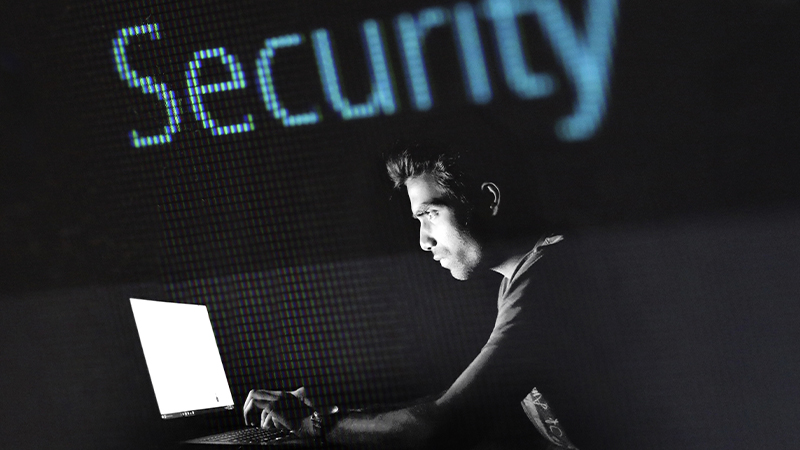By: Jordan Jones
jordanjones@lc.edu
Fun fact. Did you know that over $19.7 billion was lost in the year 2020 due to scams and malicious software? Furthermore, did you know that ransomware attacks — a type of cyber hack that puts a victim’s files and computer under lockdown until a payment is made — has increased by 148 percent in the year 2021?
The truth is, the internet is plagued with all types of dangerous software and malevolent criminals who have their bags spread for any scrap of money online. I learned the hard way that simply having an email address with a unique password and private name does not fully protect you from malicious software (malware). And, subsequently, that PayPal support is the equivalent of throwing sand at a brick wall and hoping to be refunded $300.
Since the start of this pandemic, cyber attacks have seen a massive spike in activity. Many people are locked inside all day, typing away at a computer screen to replace their usual routine of dragging themselves out of the house. This is a perfect storm for the slimiest types of criminals online; with everyone at home, vulnerable networks are much easier to abuse.
Victims of cyber attacks might agree that trying to deal with these types of situations can be a painful and frustrating experience. I was down $300 and had to file with my bank in order to get the money back two months later. I had to replace my old debit card with a new one, and change every account and email that had the same password as the one that got hacked.
I learned the hard way that you can never be too safe online. But that doesn’t mean you shouldn’t be doing more to protect yourself. If you follow these simple steps, you can minimize the chances of becoming a victim of a cyber attack.
- Have Unique Passwords For Every Different Account
If you create just one password for all your email and social media accounts, you are increasing the chances that a hacker could breach into multiple platforms, as opposed to just one. If you have a recovery email with the same password as your default email, and the malware producer realizes this and infiltrates both of your accounts, it is virtually impossible to restore either of those accounts without a long hassle, at the very least. Perhaps never at all. Using different passwords for each account is key to limiting the impact a breach can have on your information.
- Enable 2-Step Verification Always
Every email and social media account has this feature. By simply adding your phone number to your personal account, you can add a layer of security in case a hacker receives your password through phishing or other malicious means. 2-Step Verification requires that every new device that attempts to log into your email must first be confirmed through a notification on your phone, effectively preventing any software or criminal from seeing your information right away.
Before I was hacked, I had 2-Step Verification disabled as a default, and I literally cannot stress the importance of this setting.
- Avoid All Suspicious Emails
The most common way a criminal can infiltrate a person’s network is through manipulation. If you see any emails from an assumed trustworthy website (like YouTube, Twitch, Twitter, etc.) asking for a password, payment, email, or any other personal information, never answer immediately. Oftentimes, you can just go to the actual website under question and see first-hand if they really need any information from you. Chances are they probably don’t, and the email you received was nothing more than a petty attempt at receiving your private information.
On top of that, never click on any link provided by random emails/users online. These will often lead you to fake websites, also called phishing sites, that are designed to look as legitimate and real as possible, but are ultimately part of a massive scam that can lock you in for months. Avoid any and all suspicious links.
- Make Sure To Browse The Web Safely
Fortunately, most victims of a cyber breach simply get hacked once and never have to go through it again. This is partly because they (probably) went through the steps above, but the absolute best thing a person can do is to install a trusted, effective antivirus on their devices (yes, even your phone!).
This doesn’t have to be expensive, either. When I was hacked, I downloaded two free antivirus softwares to remove the malicious files straight from my computer. A more detailed hacker may still be able to work around this protection, but the secret is this: they won’t. No hacker is going to prioritize a target with 2-Step verification, a strong antivirus and all privatized passwords for every account. They would much rather hunt for a more vulnerable, easier candidate, so simply having these things on your computer and email accounts deters hackers.
In a world that is moving further and further digital, it is safe to assume that cyber attacks will continue to persist across the internet. While I opened with the statement that you can never be too safe online, it is also true that you can be embarrassingly unsafe. Just by practicing these four simple steps, you can, at the very least, limit the chances of experiencing a devastating attack in the future.
And, best of all, you can avoid that awkward phone call with PayPal support where they tell you that they can absolutely handle it, and that they can’t handle it, at the same time.




